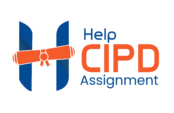Table of Contents
Task
You work for a large organisation that has recently restructured its HR department. Previously specialising in employment relations, you now work in the resourcing team under a new manager who is an experienced resourcing specialist. Your manager is scheduled to deliver a webinar at an upcoming CIPD branch event, which has garnered significant interest and many bookings. When participants book their spots, they are asked to submit questions they would like addressed.
Eager to enhance your knowledge of talent management and workforce planning, your manager has tasked you with preparing comprehensive written answers to the 15 questions submitted by participants. These questions are diverse, and you aim to impress your new manager not only with your answers but also with your ability to independently research unfamiliar topics. Since these answers will be presented during the webinar, it is crucial that they are focused, clear, and concise.
Assessment Questions
AC1.1 How can organisations strategically position themselves in competitive labour markets?
Guidelines
To answer this, you need to:
- Explain some ways in which organisations can position themselves to be competitive in tight labour markets (e.g., using the Higgs model).
AC 1.2 What is the impact of changing labour market conditions on resourcing decisions?
Guidelines
This AC has two parts:
- Provide an explanation of the changes in the labour market.
- Provide an explanation of how these changes impact resourcing decisions.
If you miss either part, the answer will be incomplete. Ensure that you focus on the impact on resourcing decisions.
AC 1.3 What is the role of government, employers and trade unions in ensuring future skills needs are met?
Guidelines
Divide this answer into three equal sections and describe:
- The role of government in ensuring future skills needs are met.
- The role of employers in ensuring future skills needs are met.
- The role of unions in ensuring future skills needs are met.
If unions are not present in your country, you can also refer to the role of other professional bodies relevant to your industry.
AC 2.1 I am new to people practice and have heard that workforce planning is important. Before I try to convince others of this, I welcome the views of someone with more experience. Could you analyse the impact of effective workforce planning?
Guidelines
You could start by describing the concept of workforce planning (optional).
The main requirement of this section is to:
- Analyse the impact of effective workforce planning by clearly describing how it benefits the organisation.
Tip: Do not explain the workforce planning process; instead, focus on why it is important.
AC 2.2 I want to introduce workforce planning in my organisation but I’m unsure which technique/s to use. Could you evaluate the techniques used to support the process of workforce planning?
Guidelines
You need to evaluate the pros and cons of at least two workforce planning techniques.
AC 2.3 Could you explain two approaches to succession and contingency planning aimed at mitigating workforce risks?
Guidelines
This section has two parts:
- Describe a succession planning approach an organisation can take. (Include one approach)
- Describe a contingency planning approach an organisation can take. (Include one approach)
Tip: You don’t need to define the terms, but rather explain how to implement succession planning and contingency planning.
AC 2.4 I tend to advertise all vacancies on our organisation’s website, then managers interview applicants. I would like to consider other recruitment and selection methods. Could you briefly assess the strengths and weaknesses of these methods as well as one other recruitment method and one other selection method?
Guidelines
This section has two parts:
- Assess the pros and cons of two recruitment methods:
- Using the organisational website
- One other recruitment method of your choice
- Assess the pros and cons of two selection methods:
- Using interviews
- One other selection method of your choice
Tip: Presenting this answer in a table can help clarify it.
AC 3.1 I am aware employee turnover rates vary from one organisation to another but what turnover and retention trends exist and what factors influence why people choose to leave or remain?
Guidelines
This answer consists of three parts:
- Discuss a few turnover or retention trends. (These trends can be general market trends or specific to your organisation or industry.)
- Explain two factors that influence why people leave an organisation.
- Explain two factors that influence why people stay in a company.
AC 3.2 I want to compare different approaches to developing and retaining talent on an individual and group level? Could you give me some pointers?
Guidelines
Compare the similarities and differences between two approaches to developing and/or retaining talent.
Tip: You can compare them based on various factors such as:
- Individual vs. group approach
- Cost
- Time
- Organisational policy/culture
AC 3.3 Could you evaluate approaches that an organisation can take to build and support different talent pools?
Guidelines
Choose two different approaches an organisation can take to build or support talent pools. Then, evaluate the pros and cons of each approach.
AC 3.4 Could you evaluate two benefits of diversity in building and supporting talent pools?
Guidelines
Explain two benefits of incorporating and supporting diversity within talent pools.
AC 3.5 I am trying to persuade managers in my organisation to take employee turnover more seriously but have been unsuccessful. Could you explain the impact associated with dysfunctional employee turnover?
Guidelines
Start by discussing what dysfunctional turnover is. Then, explain its impact on the organisation.
AC 4.1 Could you assess suitable types of contractual arrangements dependent on specific workforce needs.
Guidelines
This answer consists of two parts:
- Select a few different types of contractual arrangements.
- Assess when it is appropriate to use these contracts in alignment with the workforce needs of the organisation.
AC 4.2 I have heard there are different types of terms in contracts – surely a term is a term. Can you differentiate between express terms and implied terms?
Guidelines
Differentiate between:
- Express Terms
- Implied Terms
Tip: Using a table to present this answer may help clarify the differences.
AC 4.3 Could you explain the components and two benefits of effective onboarding?
Guidelines
This section is divided into two parts:
- Explain the components of the onboarding process.
- Explain two benefits of effective onboarding.
Tip: For a stronger answer, include one benefit for the organisation and one benefit for the employee.
Must Read:



